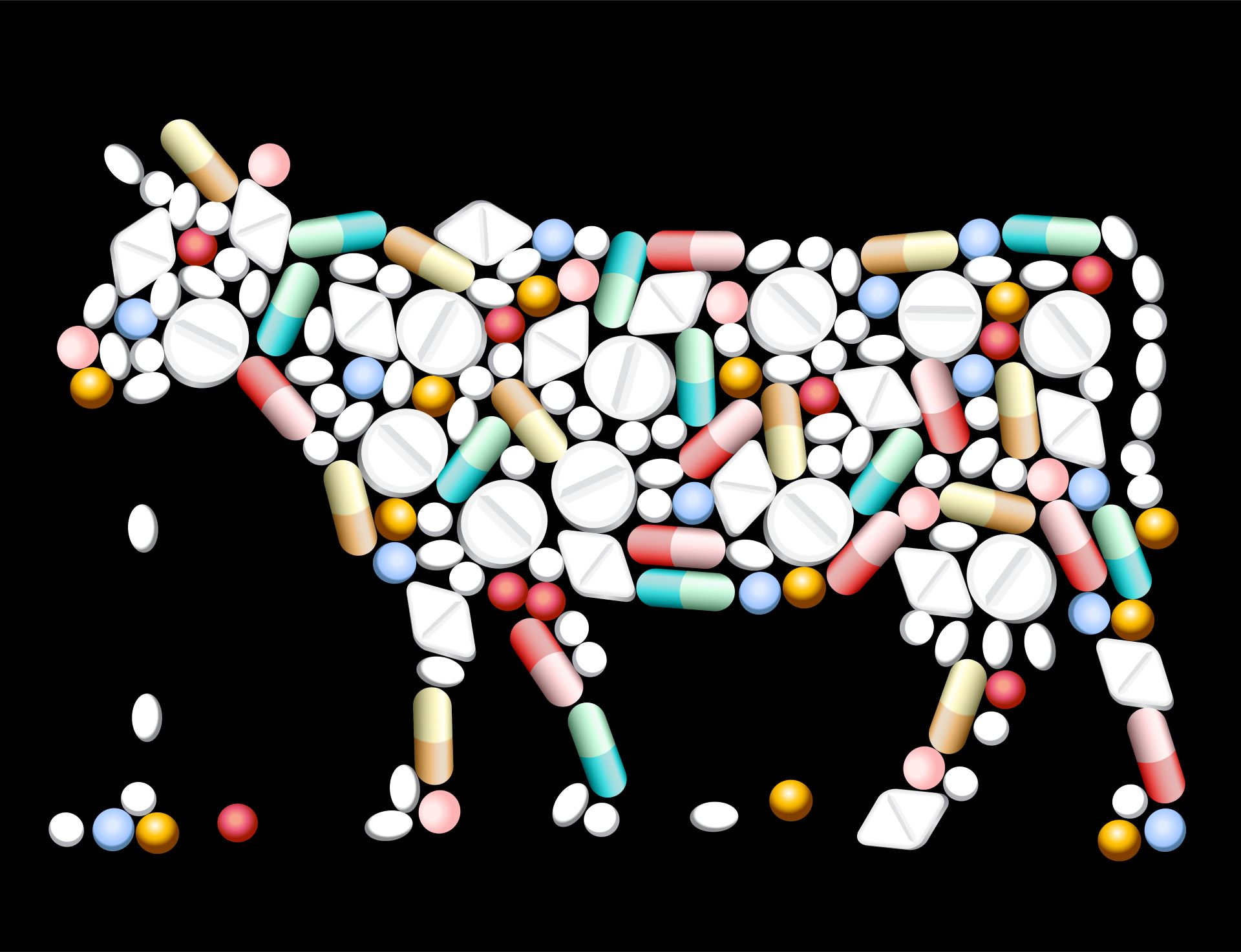The controlled-release (CR) drug delivery systems have a much wider scope in veterinary medicines compared to human therapeutics. Conventional veterinary therapy requiring frequent dosing and restraining is not only stressful for animals but it is also inconvenient, laborious, and expensive for the administrators. Fortunately, pharma companies have paid attention to these challenges and as a result of this, different CR systems of anthelmintics, antibiotics, hormones, growth alterants, minerals, and trace elements have been developed for veterinary applications to reduce dosing frequencies. These systems are specifically designed to achieve controlled drug release for up to several weeks or months, unlike once- or twice-daily use formulations used in humans.
Factors determining the design of a veterinary oral CR formulation
Designing a CR system for veterinary use involves the same depth of consideration or even more than that for human use. Following are the prominent factors:
- The interspecies difference is perhaps the biggest challenge for designing a CR veterinary formulation. The widely different digestive and biotransformation physiologies of different species complicate the extrapolation of drug half-lives from one species to another.
- Differences in body weight among animal species limit the development of products suitable for interspecies use.
- The anatomical differences are another crucial point and must be taken into account. Monogastric species (including humans) have a single-chambered stomach with an average gastrointestinal transit time of 9-12 hours. However, ruminants like cattle have a four-chambered stomach, which consists of rumen and reticulum in the front and omasum and abomasum (true stomach) in the back. The rumen and reticulum are mainly involved in regurgitation of ingested and digestion of plant-based food through microbial fermentation. The presence of rumen and reticulum increases the overall transit time ꟷ 60-80 hours in cattle and 25-40 hours in sheep. Also, the regurgitation in ruminants should be taken into consideration when designing a CR formulation for these animals as there are chances of regurgitation of dosage form along with the food.
- No residues of CR delivery systems should remain in food-producing animals, necessitating the use of biodegradable polymers.
Different veterinary CR strategies in use
- Boluses: These are large capsule-shaped or cylindrical gastro-retentive tablets weighing 3-16 g and administered with a balling gun. There are two types of boluses:
- Expanding devices: These are retained in the rumen due to their geometry. A bio-erodible, CR matrix-based device (Lilly, USA) for oxfendazole (anthelmintic) delivery in sheep has wings that remain folded during administration but spread out after administration so that the system is retained in the rumen.
- High-density devices: Tablets having densities of 1.5-8.0 g/cm3 sink to the bottom of the rumen and stay there. Excipients such as iron, sodium sulphate dihydrate, and dicalcium sulphate are added to increase the tablet densities. A bolus releasing copper and selenium for up to 6 months has been used in cattle.
- Pulsatile systems: These systems are pre-programmed to release the drug periodically in pulses. An example is Autoworm-5® that consists of a central core of magnesium alloy surrounded by concentric oxfendazole tablets in five compartments and separated by polyvinyl chloride partitions. Each tablet is released at 3-weeks intervals.
- Floating systems: These low-density systems remain buoyant in the ruminal fluids and release the drug in a sustained manner. For example, a floating flap has been developed for sustained-release of albendazole and closantel for up to 3 months.
- Osmotic systems: These systems are based on the osmotic pump technology developed for humans by Alza Corporation. An example is the ruminal therapeutic system (RUTS) Push-Melt™ technology that delivers ivermectin and selenium in cattle for up to 135 and 120 days, respectively.
- Enteric-coated systems: These systems pass intact through the rumen, but release the drug in the abomasum or intestines. Methionine, which is degraded by microbial flora in the rumen, is delivered in an enteric-coated system.
The way forward
There is no doubt that veterinary pharmaceuticals are essential for preserving and restoring animal health. However, veterinary CR technologies are still in an infancy stage with relatively small market size. The pharmaceutical sector can spin-off their human CR technologies for veterinary applications, but the interspecies differences in physiology and drug pharmacokinetics make it impractical. The road is further complicated by the cost constraints associated with the value of the animal being treated as well as the desired extended period up to which the sustained delivery is required. It is clear that emphasis should be placed on developing species- and tissue-specific veterinary CR strategies and formulation scientists must put more efforts in this research area.
References
-
Baggot, J.D., Veterinary drug formulations for animal health care: an overview. Journal of Controlled Release, 1988. 8(1): p. 5-13.
-
Cunningham, F., Comparative and veterinary pharmacology. 2010: Springer.
-
Rathbone, M.J. and M.N. Martinez, Modified release drug delivery in veterinary medicine. Drug discovery today, 2002. 7(15): p. 823-829.
-
Ramteke, K., et al., Veterinary Pharmaceutical Dosage Forms: A Technical Note. Austin Therapeutics, 2014. 1(1): p. 10-2014.
-
Jain, S., et al., Controlled drug delivery systems for veterinary use: A review. Indian journal of pharmaceutical sciences, 2003. 65(1): p. 9.
-
Fahmy, R.M. and M.N. Martinez, Principles of Pharmaceutics and Veterinary Dosage Forms. Veterinary Pharmacology and Therapeutics, 2017.
-
Brayden, D., Novel drug delivery strategies in veterinary medicine. Irish Veterinary Journal, 2003. 56(6): p. 310-316.

